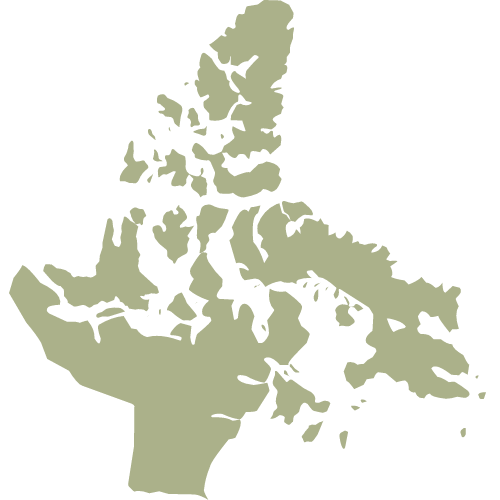Nunavut
Last Updated: April 2023

Current majority government:
Premier: PJ Akeeagok
Non-partisan consensus government.
There are 8 cabinet members and 12 general members, all without a political party association.
Find your MP by constituency here: (3)
Environmental stance of majority party:
As a part of joint statement with the Premiers of Yukon and Northwest Territories along with Indigenous communities calling on the federal government to adequately address the threats climate change poses to Northern communities, Premier Akeeagok acknowledged that “climate change is disproportionately impacting our Arctic communities, making it imperative to invest in long-term sustainable solutions” (4)
Percentage of 2020/2021 budget estimated to be allocated to the environment:
Total 2023-2024 Estimated Budget: $2,360,056,000
Total 2022-2023-2024 Estimated Spending: $2,284,689,000
Department of Environment:
Estimated Budget for 2023-2024: $28,459,000 (1.2% of the budget)
Estimated 2022-2023 Spending: $32,157,000 (1.4% of the budget)
$3,698,000 projected funding decrease from 2022-2023 to 2023-2024 (5)
Main provincial-level legislation for environment protection:
Environmental Protection Act (7)
Broad act regulating pollution and environmental contaminants.
Environmental Rights Act (8)
Defines the environmental values of the NWT and states that “every adult resident in the Northwest Territories has the right to protect the environment and the public trust.”
Protected Areas Act (9)
Establishes distinct protected areas to preserve biodiversity across the Northwest Territories
Main provincial-level legislation for environment protection:
Environmental Protection Act (1988) (6)
An Act setting out to define and regulate the use of contaminating substances within the territory.
Environmental Rights Act (1988) (7)
Regulations in place to protect the environment due to the fact that the people have the right to a healthy environment and to protect the integrity, diversity and productivity of the natural ecosystems
Pesticide Act (1988) (8)
An Act for regulating the use and storage of pesticides in the land, air, and water within Nunavut.
Nunavut Wildlife Act (2005) (9)
Establishes a regime for the management of wildlife and their habitat including the conservation, recovery and protection of at-risk species
Specific government-based environmental programs:
Classroom Visits
A trained conservation officer, biologist or other environmental specialist will visit students in the classroom to provide environmental education.
Environmental Assessment and Land-Use Planning
Any persons/corporations proposing development on land in Nunavut must get an Environmental Assessment review through this program to obtain a permit.
Fisheries Development and Diversification Program
Offers financial assistance for projects that could strengthen, develop and diversify Nunavut’s fishing industry.
Wildlife Deterrence Program
Promotes safe and sustainable coexistence between wildlife and humans.
Pollution Control
An environmental protection program that provides and facilitates protection of the environment and enforcement in all communities in Nunavut.
Teacher/Educator Environmental Education Training
Project Wild and Below Zero environmental education/curriculum programs and certifications are offered by the Nunavut Department of Environment for use/achievement by education staff within the territory.
Information on all of these programs can be found here.
Next election date:
Fun Facts:
Find information and guidelines for waste management, emissions and environmental guidelines here: (11).
Nunavut emits the least amount of GHGs in comparison to other provinces and territories, emitting 0.6 megatonnes of CO2 gas in 2017 (12).
Warmer winters and thinner seasonal ice cover will alter arctic biodiversity and interfere with traditional hunting methods of Nunavummiut (13).
Increased temperatures can result in drifting sea ice that can impede commerical ships docking and departure (14).
